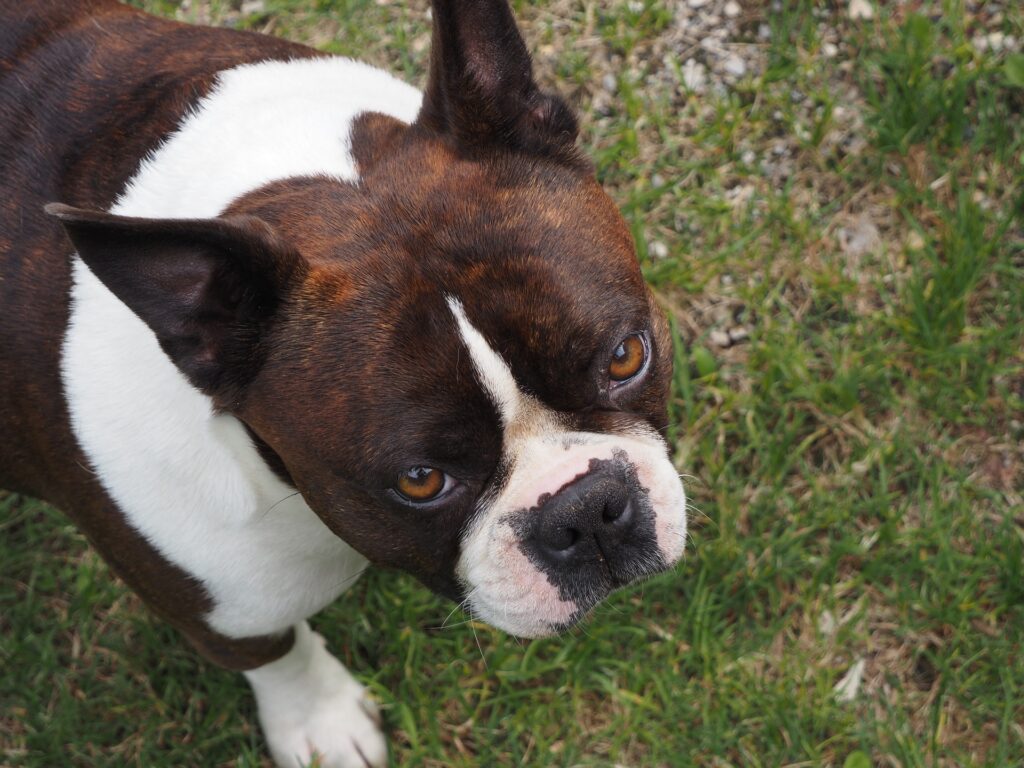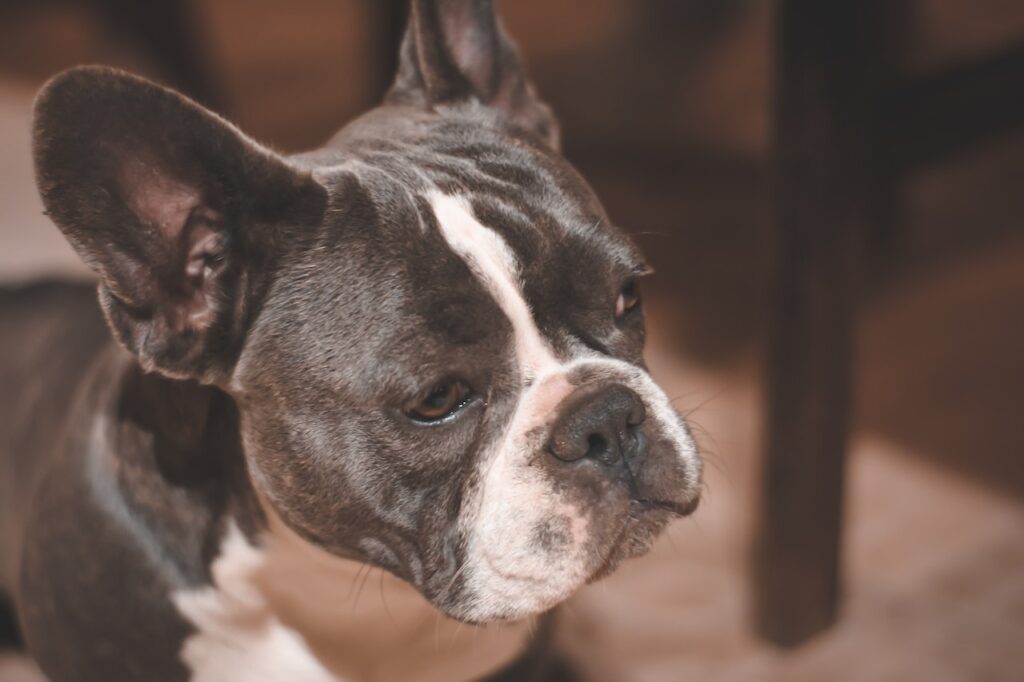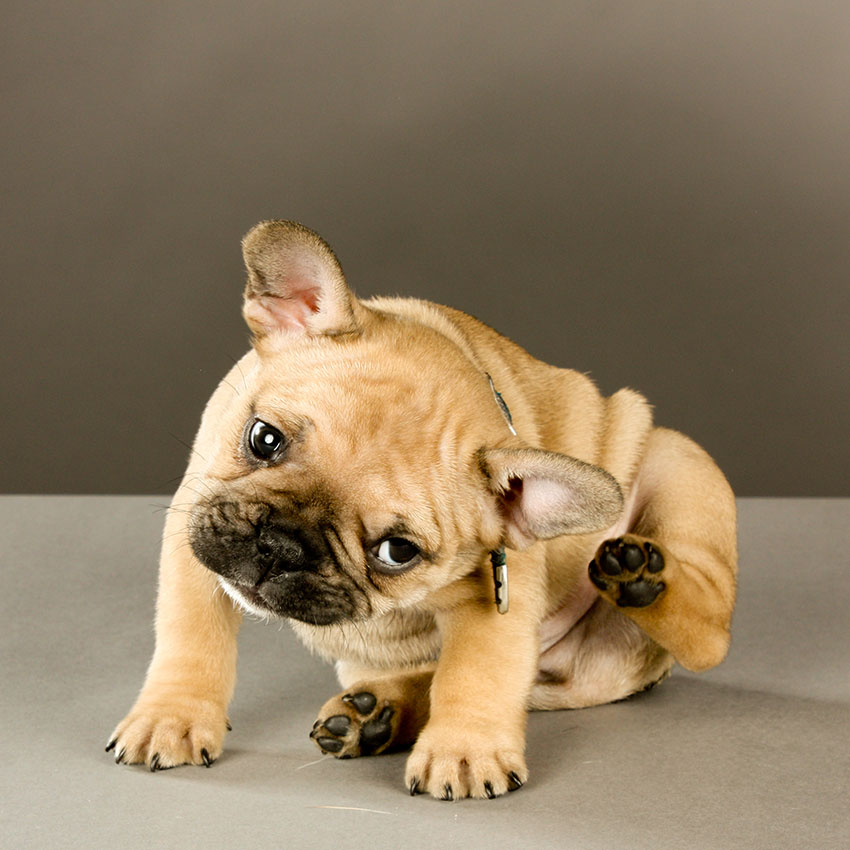French bulldog hot spots are one of the most painful skin conditions your pet may face. They not only look terrifying but can also lead to severe infections if we leave them untreated. Hot spots on Frenchies are referred to as acute moist dermatitis, typically caused by a combination of factors such as allergies, insect bites, poor grooming, and excess moisture.
The crucial thing about hot spots is to react quickly. Otherwise, your pooch will deal with extreme discomfort and bloody patches that can quickly become infected. Dogs can get skin problems, especially in hot summer months. One of these problems is acute moist dermatitis otherwise known as hot spots. It can be annoying and even dangerous if not treated right away. To help your furry friend, it’s important to know how to spot and treat this issue. So, let’s learn more about it!

Hot Spot On French Bulldog: What Does It Look Like?
French bulldog hot spots are common skin conditions that appear as swelling. They start as small red spots that are often mistaken for insect bites or just a minor scratch. The most significant difference between insect bites and hot spots in dogs is that hot spots tend to spread and worsen quite quickly.
Did you know that hot spots in dogs have an interesting and sneaky way of forming? They tend to happen when a dog scratches a specific area too much, which leads to inflammation and can even create an opening for bacteria to enter and multiply. This means that the second part of forming a hot spot is often a bacterial infection.
As you can imagine, this can cause a lot of itching, and unfortunately, the dog will likely continue scratching the affected area, making things worse. It’s a frustrating cycle, but don’t worry – with some TLC from you, your furry friend can break out of it. The most common reasons why dogs scratch excessively are:
- Atopic dermatitis
- Food allergies
- Parasites
- Flea allergic dermatitis
- Anal gland disease
- Ear infections
- Skin infections
- Excessive licking
- Matted hair
- Moisture trapped in hair after bathing
When it comes to addressing hot spots in French bulldogs, it’s important to understand what causes them. They are usually secondary issues resulting from an underlying condition that needs to be resolved. For instance, if your Frenchie suffers from food allergies and develops a hot spot, you won’t be able to clear up the hot spot until you make some dietary changes. Some of the common causes of hot spots are chronic, which means your French bulldog may experience recurring hot spots.

What Dog Breeds Are More Prone To Get Hot Spots?
Dogs with long and dense coats such as Shiba Inus or Corgis are prone to collect moisture and are more susceptible to developing hot spots. Breeds that require regular grooming, such as Maltese or Yorkshire Terriers, can also develop hot spots if their coat is not properly maintained and becomes matted.
On the other hand, Pugs and Frenchies are also on a higher tendency to develop hot spots because of the multiple folds on their bodies.
That’s why it’s essential to regularly groom and maintain your dog’s coat clean.
How to Recognize Hot Spots On Frenchies?
Most commonly, it is caused by local allergic reactions that stimulate extreme licking, biting, or scratching, such as:
- allergies – food, inhalation, contact
- ectoparasites – fleas (flea allergy is the most common cause of hot spots), ticks, mites
- ear infections
- poor hair coat care
- painful musculoskeletal conditions (dysplasia, arthritis)
- anal sac issues
- behavioral problems
Frenchie Hot Spots Signs
The disease tends to have a seasonal nature and is infrequently observed during winter. Typically, it occurs during warm and humid weather and is more prevalent among breeds with dense undercoats and folds due to poor fur ventilation.
Hot spots manifest as circular-shaped, red lesions with sharply defined borders. They are mostly devoid of hair, but sometimes covered with hair, moist with purulent discharge, and incredibly painful. The size of the lesion may vary, with some measuring up to 10 cm, and they can develop in multiple locations where the animal can reach to lick, bite, scratch, or paw.
The location of the lesion can provide a clue to its underlying cause. For example, if the lesions are found on the head or neck, it is highly likely to be related to external ear canal diseases. If the lesions are around the base of the tail, it could indicate issues with the anal sacs. If they occur above the hips, it may suggest possible hip dysplasia issues and so forth.
These lesions tend to develop suddenly and spread quickly, often within hours. Owners may observe that their dog had no lesions the night before, but in the morning, the dog may have a lesion or even multiple lesions, as large as the size of a palm.

French Bulldog Hot Spots Treatment
If you notice a lesion on your furry friend, it’s best to get them to a veterinarian as soon as possible to prevent it from spreading and becoming infected. The vet will be able to identify the primary cause and prescribe the appropriate treatment.
To start with, the lesion needs to be cleaned. We recommend trimming or shaving the hair in and around the area so that the wound can dry in the air and not become too moist. The vet will then gently wash the lesion with cold or lukewarm water and use mild antiseptic shampoos.
After cleaning the wound, you may use creams containing antibiotics and corticosteroids to help with the healing process. It’s important to note that corticosteroids may only alleviate the itching and not treat the underlying cause.
The vet may also recommend systemic antibiotic treatment for your dog if needed.
To prevent your furry friend from licking or scratching the area, we suggest using a protective collar and thicker socks on their hind legs.
Hot Spot On Frenchie Prevention
It is important to regularly groom your dog and comb the coat down to the skin, especially in the spring when it sheds its undercoat. Regular flea protection should be applied, and anal sacs should be checked in dogs that have problems with them.
